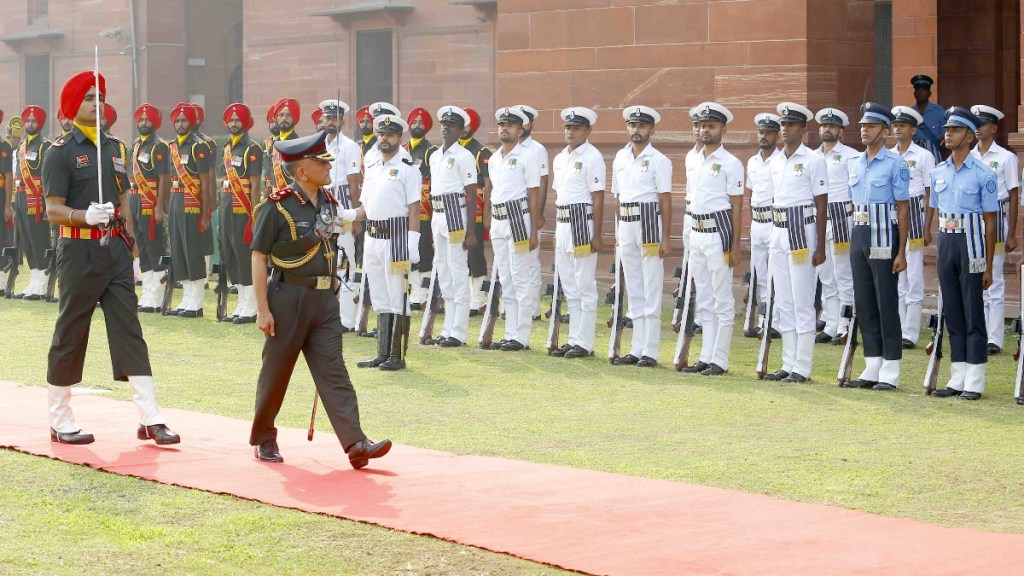By Lt Col Manoj K Channan, Veteran
General Anil Chauhan, PVSM, UYSM, AVSM, SM, VSM, former Eastern Army Commander, assumed office as the Chief of Defense Staff (CDS) and Chairman Chiefs of Staff Committee (COSC) on September 30, 2022.
The second CDS of India has many tasks; among them, the most challenging is creating a consensus for Theatre Commands. While the significant defence services across the globe have re-structured to Theatre Commands, India is in the process. While the Theatre Commands directly impact the resources of the Indian Army and the Indian Air Force, the reluctance of the IAF to be part of the same has to be understood correctly. How this is resolved is a million-dollar question.
Resources
The IAF has an authorized strength of Forty-Two squadrons, and over the years, this has dwindled to thirty odd Squadrons. Theatre commands would mean the dissipation of critical resources for a cohesive Air Battle to be fought in which there is complete dominance of the skies by Air Superiority.
Responsibility
The IAF is responsible for Space and Air Defence of India to include the maritime boundaries along the coast line of India. In addition, the resources are utilised for Humanitarian and Disaster Relief within the country and abroad, as has been witnessed over the last two years of bringing back Indian citizens during the Pandemic and recently from the Ukraine conflict zone.
Read More: New CDS takes charge, expected to ensure synergy of Armed Forces
Upgrades
Modern-day battlefield threats ensure that technology upgrades are regularly carried out, and threats are mitigated. Obsolescence of equipment and its replacement has to be factored in. The Ukraine war has disrupted the supply chain of spares and a significant equipment overhaul, thus affecting operational readiness; this is an assessment.
The way forward is to make up for the deficiencies and have a balanced approach. If viewed from the perspective of land warfare, the resources of the IAF may seem adequate. However, pragmatically, the lessons drawn from the ongoing Ukraine conflict can be deduced as a campaign being fought as individual battles and thereby suffering heavy attrition.
Preliminary Steps – National Security Strategy (NSS) – India
India needs its own version of Goldwater Nichol’s legislation, is there a political will to pass an act of the Parliament to meet our National Security Objectives?
In the absence of an NSS paper, India is preparing for the last war
Unlike the US and China, where NSS is a policy document promulgated to develop capability and capacity to meet future threats, in India, the political leadership has taken the path of least resistance and therefore has been relying heavily on diplomatic parleys and negotiations to tackle its belligerent Northern neighbour, China. On the other hand, Pakistan has agreed to a ceasefire across the LoC, yet terror remains an instrument to inflict damage to civilian populations and property. Hence, one of the self-assumed aims of the Indian Defence Services is to make punitive strikes in retaliation to a terror strike like Pulwama.
The Indian Air Force carried out Jabba Top strikes in the early hours of 26 February 2018; in the retaliatory strike by Pakistan Air Force on 27 February on a brigade HQ, there was no riposte by the Indian Defence Forces.
The NSA, in its charter, is to prepare an NSS paper and get it approved by the Government for its implementation. However, NSS is not published; it appears the core competency in military affairs is lacking.
After the 1971 war, when a tri-service discussion analyzed the war, Gen Sam remarked, “you can win as many battles as you like at sea, or in the air, or even lose them, but eventually it is the Army that will prove to be decisive”.
Great maritime thinkers like Admiral Alfred Thayer Mahan emphasized that any great land victory would never be lasting or decisive unless the sea played a part in the conflict, in which case victory at sea was an essential precondition.
Without Air Superiority, it will be a disaster for the ground forces. The lack of the above is visible in the Russian campaign in Ukraine. The lack of cohesion of troops and the Ukrainian Army has caused heavy attrition to Russian assets on land, air and sea.
The author is an Indian Army Veteran.
Disclaimer: Views expressed are personal and do not reflect the official position or policy of Financial Express Online. Reproducing this content without permission is prohibited.

